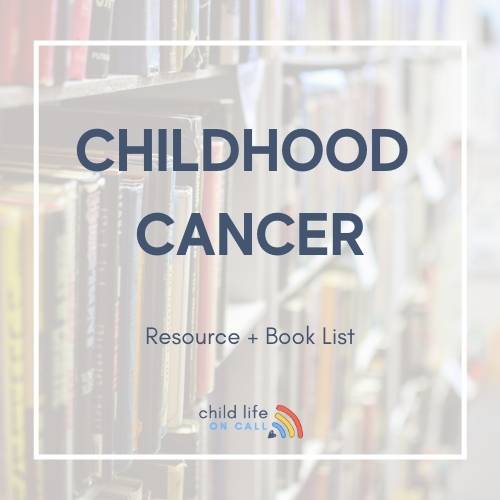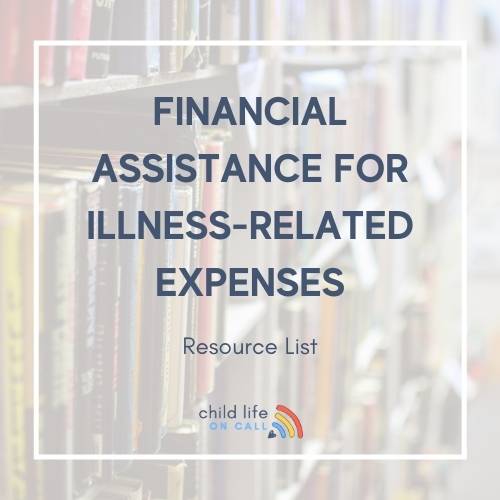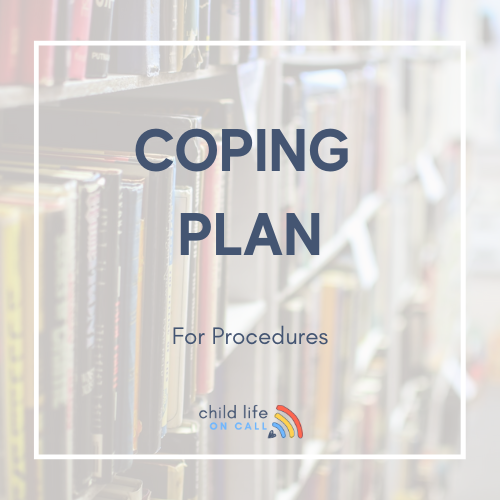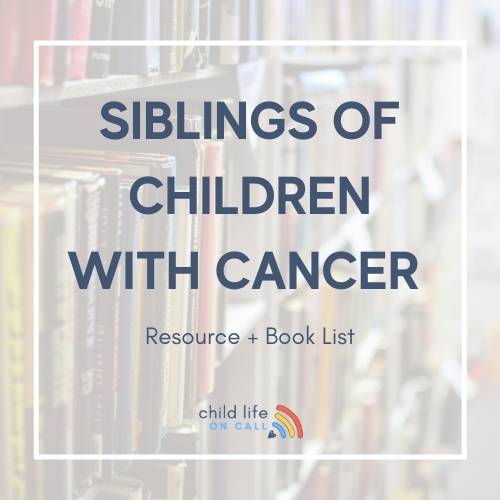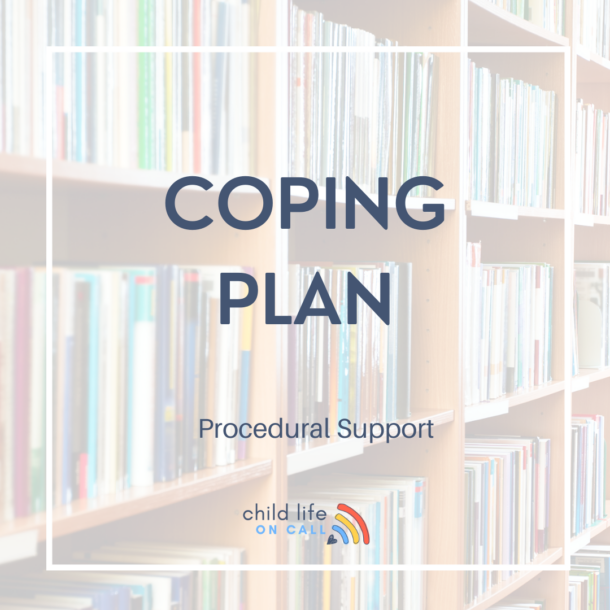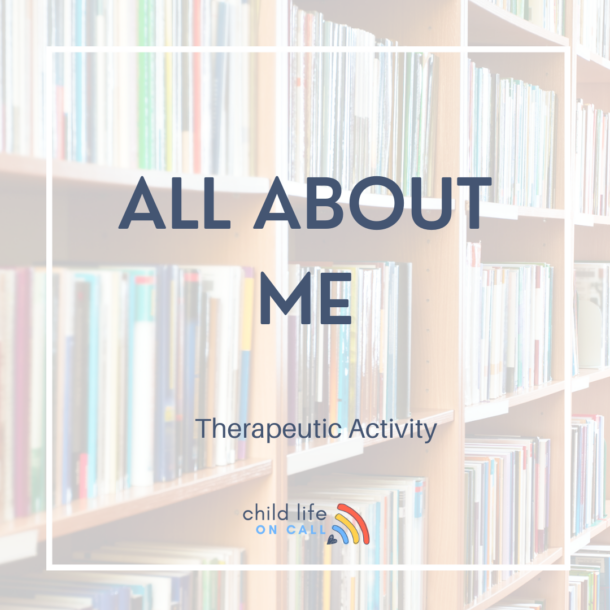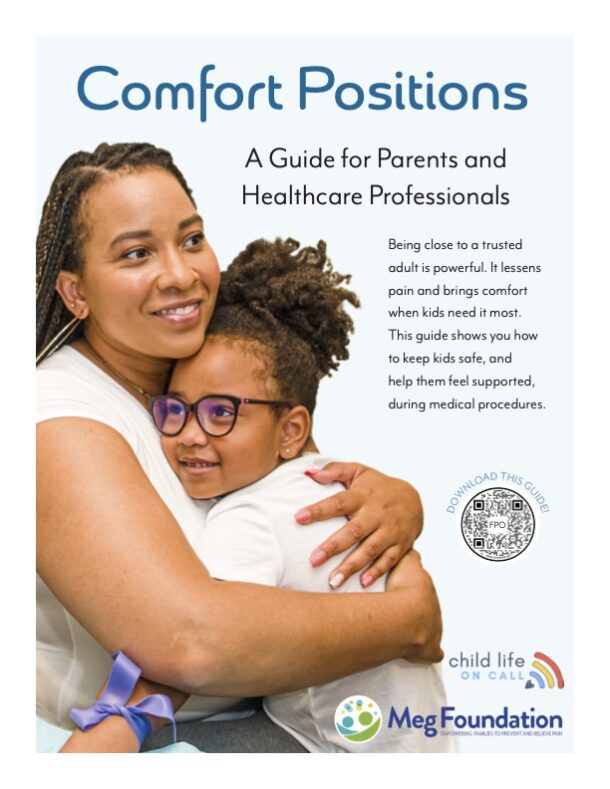The first sign of sniffles, or worse, shouldn’t send you into a tailspin. Feel confident in your role as a parent and advocate, no matter what medical situation you’re facing.
See a full transcript of Episode 199: Kate Kostolansky's Story below.
00:00:05 Hello, my friends. Welcome to Childlife on Call. This podcast is a safe place for parents to share their stories about what it’s like to have a child that has a medical experience, diagnosis, disease, and or everything in between. We know there is power in sharing stories, and that power multiplies when you can listen to other parents who have walked a similar path to yours. Giving and getting advice is great, but hearing how another parent navigates the complexities and nuances of healthcare is even better. 00:00:35 As a child life specialist, my role is to support, validate, and provide emotionally safe spaces for kids and their families, and I am so honored to be on this journey with you. In addition to parent stories, we sprinkle in some expert episodes every now and again that have content for both parents and professionals in the field of healthcare. All with the mission to empower parents to be confident advocates and partners with the care team during healthcare experiences. We’re so glad you’re Kate. You know, Kate and Katie. 00:01:11 Maybe we should start a podcast called Kate and Katie. Love it. Okay. I’m so glad that you’re here. I have been following you for a long time on Instagram, so it’s always so fun to put a face and actually get to meet you. 00:01:24 I’d love if you could share with our listeners a little bit about you, your family, where you come from, and just a little bit about you, Kate. Yeah, so actually, I am from Massachusetts, where you just visited. Yes, I was just there. We were texting, so. Grew up in Massachusetts, met my husband in college, and we moved to Colorado, had our first baby, Charlote, there. 00:01:49 And then pandemic crazy, ended up moving back to the East coast, and that was just so exciting to be back home and welcomed our second child. So we moved back to the East coast and that was exciting. And then we just welcomed Teddy, our second last September. And actually, while I was pregnant with him, I was about eight and a half months pregnant, was when Charlotte got her infantile spasms diagnosis. So it was very surprising because infantile spasms is a rare form of epilepsy, but it’s actually the most common in children, zero to one. 00:02:32 So the first year of life, Charlote was actually 22 months old, and so she was outside of the norm for an already rare kind of thing. And it just completely turned our world upside down. It was very scary, devastating, and something we had never heard of. So learning all of that and trying all the medications and really trying to wrap our heads around this very serious and brand new diagnosis was really challenging. Wow. 00:03:11 What you said about being so pregnant with your second, receiving a diagnosis with your first has just got to feel so daunting, like you have a newborn you’re about to bring into the world. And this new, challenging diagnosis, I can only imagine what that felt like. Yeah. As a first time mom, you’re nervous anyways. You kind of worry about everything, and I definitely did. 00:03:38 I asked her pediatrician about everything under the sun. And initially when she started doing what looked like kind of the morrow reflex with the startling, but what really stood out to us was she wasn’t a baby anymore. And something that’s really stuck with me is that had she been a newborn or been in that first year of life, it would have been even less concerning to me because it doesn’t look as catastrophic as it really is. And so showing our pediatrician initially, she reassured us that you’re just a worried first time mom probably saw how pregnant I was and was like, you’re just being nervous, and she had been developing normally, and you kind of want to believe that, too, and that you’re being a little crazy. And so then once she was diagnosed, it’s like that relief of finally being heard and having that diagnosis. 00:04:52 But the reality that it is real is also devastating. Oh, my gosh. So true. That diagnosis is so it’s not just a word that has one meaning. It’s a word that has so much feeling and emotion behind it from relief, like you said, validated. 00:05:14 Like, yes, this is a word that I can put to what I’m seeing, but also overwhelm of, oh, my gosh, how do we move forward now? The prognosis is not good, and a lot of that has to do with it’s really unheard of and not studied enough, and there’s not enough medications, not enough research, and it’s come a long way, but it also has a long way to go. And so finding resources and families that have been through this was also really challenging. Yeah, it’s all hard, but it’s not diabetes, it’s not a specific type of cancer that you see. With all the walks and the foundations, you really had a challenge when you got that diagnosis. 00:06:03 I can only imagine what maybe some of the parents are thinking who are worried. First time parents, especially in that zero to one, and I can think back hundreds of times, I saw my child have that startle reflex. Now, knowing what you know as a parent advocate yourself, what are some of the things that parents can look for when maybe it’s irregular or something else to look for, or should every parent be aware of this? That’s a great question, because now being in the advocate space, it’s always a fine line that I get a lot of people asking, does this look like is? And I am not a medical professional, but it ultimately is still very rare and is not going to affect most kids. 00:06:52 So by no means am I saying everybody should be worried. But there are certain things that you can look for, and mostly if it’s rhythmic and it’s something that seems involuntary. Okay. I think as a mom, you get that gut feeling of this just doesn’t seem right. And I couldn’t put a name to it, like you said originally, but if there’s something that feels off and it seems like it’s too consistent to be one off, people may not know what the word is, but taking a video and showing it to their pediatrician, I think is the number one thing that they can do. 00:07:41 Thankfully, in some ways, healthcare has come a long way that we can video things, we can send it, we can make an appointment and show it. There’s still so much work to do in healthcare, but that is one thing that we can do and record. And like you said, sometimes you can share it with your pediatrician and they can tell you, I don’t think it’s that you’re a worried mom and that hurts. Right? It’s like a relief, but it hurts. 00:08:09 And it sounds like you continued to trust your instinct. Can you talk a little bit about what steps you took after that to get some more answers? Sure. So my know, she was wonderful, and Charlote really didn’t fall into the know category anyways, so as soon as I asked for a referral to a neurologist, she said absolutely. And it was kind of hoping to be peace of mind. 00:08:41 And obviously it didn’t turn out that way. But I think that making sure that you are concerned seeing a neurologist or taking them to the emergency room, it is a medical emergency. And for something that seems so subtle, for that movement to be just an arm raise or a head drop, I even for a bit called it like she was shaking and kind of had a shiver go through her body. And for it to look so subtle, it’s very counterintuitive that it’s actually extremely damaging to the brain. I didn’t think it was epilepsy or consider it a seizure until I was educated more. 00:09:32 But understanding that it is far more damaging to your child’s development than regular epilepsy was really surprising and terrifying. And I think that if parents really knew that it was an emergency and not something just to. Maybe I’ll bring it up at the next appointment. That is ultimately where I think the understanding of is can really change. More kids are diagnosed with infantile spasms than die from SIDS each year. 00:10:08 And that is obviously a horrible stat to know. But it’s been impactful to me in that 30 years ago, we didn’t know as much about SIDS, and we didn’t have the information of safe sleep. And that came from people talking about it and people advocating and mothers and families that were impacted trying to change that and having the research and everything to spread awareness that ultimately has made the difference in the awareness of SIDS and to know that infantile spasms is actually more common than that. I think we still have a long way to go. Yeah. 00:11:02 So you put it so succinctly, video it and show it to your pediatrician, ask for a neurology consult. Pediatricians are usually more than willing to consult out. And if they say no, go find it yourself and just do what you can to get access to that. Or ask if your pediatrician has any recommendations if you were to go find someone yourself. And then third, talk about it like you said, talk about it to everyone you can to spread this awareness that what you’ve put about SIDS and safe sleep, I mean, it’s a whole campaign all throughout hospitals. 00:11:37 And what you’re doing right now is really helping to start the charge with is, and what can we do now to make it just as well known, to perhaps prevent and keep it from happening. So help us understand a little bit about your life after the diagnosis. And you talked a little bit about developmental delays or things that can come because of the impact of the seizure on the brain. What has your life looked like? Going to appointments, finding treatment? 00:12:10 What is it like now? Sure. So if you had asked me this a year ago, I would have had a very different answer. And I do share that Charlote is doing great now, and I think the focus should more be on the 90% of kids that don’t because we know how fortunate we are to be where we are. Charlote kind of was already in a rare subset of this rare condition, and she is doing great. 00:12:45 It has been a really tough year with finding the right medication and then the medication side effects. And she has every therapy under the sun from speech therapy, oT, but especially as a first time mom and somebody that grew up, and I hate the word normal now, but neurotypical that it has opened my eyes to just everything from early intervention, speech therapy, and child life, too. It’s just fascinating and something that I wish every kid could get. So I know that her journey is a lot different than most kids. And while she still has to work very hard, she is doing great. 00:13:32 And so I am happy to share that, but also really compassionate that that is not the norm. And I think when you said preventing is, it comes back to there are so many different causes and there are so many different reasons that you can have is, and it’s not something that you can, at least right now. And obviously the hope would be that one day you could prevent it. But I think it is such a broad and understudied, funded and researched condition that there are so many different directions that need work on because most kids, I think that the stats are actually two thirds of kids fail medication. We were prepping for brain surgery ourselves. 00:14:29 We were close to failing that second med and then epilepsy doesn’t make sense. And it started working as we were weaning it. And I’m not complaining, but there just aren’t enough options. And so most kids, I think, struggle a lot more because of medications not being available that work for them. That seems to be more common. 00:15:01 Gosh, I can only imagine the protocol or treatment for starting medications, weaning medications. I only have experience for myself in antidepressants and how horrible that is on my brain and my body and how tough that is. But it’s not that often that while weaning, you find the answer. But what that does give us a little bit of hope and patience for trusting the process of these protocols, that it’s maybe when you least expect it, that it could start working. And the other thing, I just want to say what a gift you are is because the parents whose, kiddo, the medications aren’t working, that are going through surgery, having someone like you come on a podcast and create resources and talk about is must just be one of the most comforting things if they can’t at this time. 00:15:54 Thank you for doing the hard work that you don’t have to do either. But it seems like you’re so well spoken and you’ve fallen into this role of incredible advocate and inventor entrepreneur, and it suits you so well. Thank you. The book was originally meant to explain to CharlotE’s teachers and classmates kind of what was going on because it’s confusing. And my husband actually said to me, can you imagine if we had left the hospital and had a book that was written by a parent that had been there and I’m sure you feel this sometimes it’s imposter syndrome, that why would anybody want to. 00:16:40 I’m not a child author or I don’t know what I’m doing, but I also didn’t know what I was doing when we got the diagnosis. And you figure that out, too. 00:16:53 And even you said about medication and kind of seeing it through. I talked to so many moms that they’re at the beginning stage of the treatment and it is awful. It was definitely the darkest time of my life. I did not want to get out of bed. It was heartbreaking. 00:17:12 I felt like it was stealing my daughter’s childhood. It was just the worst thing to see. And it’s a short amount of time, and if you see it through and they then are off it, they come back to you. And that’s what I tell them, that it’s horrible and I hope it works the first time. It didn’t for us, but it is intentionally aggressive and it’s horrible to watch your child on that medication. 00:17:45 Any of the first line treatments? There are a few, but there are two in particular that they typically start with. And both of them, all parents say it’s just absolutely hellish. And I think if I had known that, okay, this is going to be the worst month of your life, it wouldn’t have made it any easier. But at the same time, you kind of have that light at the end of the tunnel that all these other kids that hopefully some that did get success from this, you just have to see it through because it is so horrible to watch. 00:18:23 And you’re like, why am I doing this to my child? It’s horrible to watch, especially when you’re just wrapping your head around this little movement actually being an extremely damaging symptom of what’s going on in your child’s brain. And then you’re pumping them full of these very aggressive drugs that it’s hard to watch. It’s really hard to watch. And to have other parents that have been theRe, I think is something that’s helpful. 00:18:58 Yeah, I can imagine. When the doctor tells you, this is going to be really hard to see, this is going to be difficult, this is going to be horrible. It’s harder to take from someone for some reason. It just is. We like hearing it more from parents who have seen it themselves as a parent, and the doctor can prepare you for anything, but hearing it from someone like you that there’s a light at the end of the tunnel. 00:19:27 In some form or another, this too shall pass. This phase is probably incredibly helpful for parents. Yeah. Charlote’s neurologist. I’ve said this to a few families that they mean well, but they also aren’t there day in and day out. 00:19:45 And we go to Boston children’s. They are the best in the entire country. I love them. They have done amazing work, but they’re not there day in and day out with you and in having other families and a support system of people that have lived it with their child does just feel more connection than the person that is prescribing it. So I’m so interested to learn about your journey before becoming this incredible advocate and entrepreneur. 00:20:24 But tell us a little bit about what. Was there a moment that inspired you to create your book and then create this teddy bear and start your Instagram account? Or were you just trying to fill a gap that you continue to see? I do that. My dad calls it a gap filler. 00:20:40 If you see a hole, fill it. And I just kind of am attracted to these holes and getting creative with how we can fix it. How did it work for you? That’s exactly it. I do have a full time job. 00:20:52 I’m an administrator for surgical practice, and I had no intention or interest in anything beyond really being a mom and taking care of my baby during this unimaginable time. And I ordered every book under the sun about epilepsy, and some of them are really well done. And the hole that I found was, it was all a little too advanced for Charlote, and she’s older than 90% of the children diagnosed with is anyways. And so if it was too high level for her, then it definitely is for anybody younger and siblings and everything else like that. So the goal was really to create something that was easily understandable by kids, didn’t have any big words and wasn’t trying to get into the details too much. 00:21:58 And so by no means is it what you should be reading to completely understand treatment choices, know anything like that. But it’s the basics. It follows Charlote and from going to the doctor and then going to the special hospital for little bear cubs. And that was something that was scary for her. And with all kids, the more you explain it and they understand that fear turns to empowerment, that they kind of are prepared for what’s coming and can understand. 00:22:40 She knows that she wears her special hat for the doctors to look at her brain and make sure it’s all going right and just easily understandable for kids. It was the main goal and a gap that I saw and wanting to have something for her to kind of understand and then to explain to other kids her age what was going on. Yeah, it’s a beautiful mix of feeling seen and then having ideas for feeling empowered and then knowing a little bit about what’s coming. And those are such key, essential concepts for kids, and they don’t have to be terribly complex. Like you said, we don’t need Charlote to understand why this red lead goes here or why we do it this often. 00:23:34 But to understand that there’s someone else who’s gone through it before, whether it’s a bear or another child, and to feel empowered and what a special gift you’ve given her, so many other kids and your son as well. Yeah, we joked that Charlote, she loves all things music. And we joke the book does not rhyme, and it’s not anything that you can press and hear music. So it’s quite underwhelming in some ways. But if that isn’t good, oh, my gosh, 1000%. 00:24:08 It’s the whole, like, you give your kid this really special toy and they want the box, and you’re like, good. I haven’t asked this question before on the podcast, but what does y’all’s coping plan look like when it’s time for another EEg? How do you prepare yourself? How do you prepare her when she has another treatment to go in for, to get another Eeg? Yeah, for a little bit we were okay, because she didn’t fully understand what was going on. 00:24:39 And when they’re young, that’s kind of a nice perk of them not understanding initially. And in the past year, as she has continued to develop, which is something that we were honestly prepared to not be the case, we started running into these questions and feelings when we were going to them. And while on one hand, we’re so excited to see that she is age appropriately understanding this stuff, then, yeah, you’re going to have to do this for the rest of your life, probably. So let’s get comfy. It began. 00:25:21 Okay, how are we going to explain this and get her comfortable and prep for that? So I’ll show you the little bear. And this is actually with an old burp cloth that I made and cut out for the ears know, put all the little leads on. And a much more professional one is being created right now as we speak. But really, it was to kind of show Charlote what was going to be happening. 00:25:55 On the real one, there’s a little Velcro button, and that is where you can show, like, okay, so that’s where the special sticker goes, which is the electrode, but that kind of gives an idea of how it’s going to attach to you. And it’s been really fun. I’ve talked to a lot of moms that are like, I can’t wait to get this. And one thing that they added that’s really been my favorite part of all the different suggestions from other moms. One of my friends suggested putting a sticker right here because, oh, my gosh, if you’ve ever had to get that off of your kid, it’s the one that hurts the most. 00:26:36 So kind of preparing them for that and having something that this bear is going to do it with, you have to wear their hat and have to wear the backpack because that’s the other thing that she kind of has to have that monitoring device attached, and it’s important that it stays everything so they get the best reading that they can and preparing her by showing her what’s going to happen through this. It was kind of makeshift at first and has actually really worked. And it kind of, I think, turned her confusion into understanding through pretend play, kind of. Yeah, it’s so true. Because when kids have something done to them, like an EEG, as the adults or other people in the room, you’re watching it happen. 00:27:35 You’re watching it move from the EEG Tower to the glue going on to it going on them. But as a child, you’re just sitting there having it done to you. You don’t even realize what it looks like. You just know what it feels like, and then it feels scary, and you don’t understand why. So seeing it happen on something like a bear, it seems so simple, but it’s so impactful. 00:28:01 Yeah. And same thing. I would have loved to buy one. So this was kind of like, okay, there isn’t anything else out there that I could find like it. So to make one, and it was never the goal to sell those either. 00:28:17 And it seems like there are so many other moms is aside, pediatric epilepsy is there’s almost 500,000 kids that have pediatric epilepsy that are getting eegs done regularly. That for there to not be anything like that also shocked me that there hadn’t been anything done like that. So. Yes, just a big gap filler over here. Yeah, I love it. 00:28:47 I love a gap filler. It’s the bear I really love, too, because it themes with your book, Sharbar keeps dancing. And I love how the bear is not only a teaching tool, but also a comfort item. And that’s something that so often as childlife specialists, we use with kids in coping plans. And it looks different as you grow. 00:29:07 Like at first your comfort item is your parent or a pacifier or skin to skin. And then as they grow, maybe it’s a comfort position and then maybe it’s a teddy bear. Maybe it’s your blanket, then maybe it’s a stress ball. It continues to change, but you have created two things in one, which I just love, and I’m so grateful for you. Thank you so much. 00:29:30 Yes. Well, where can people get your book? Learn when the bear is going to be available and follow along with you and your story? Sure. So we don’t have the bear available yet. 00:29:43 Hold your horses, people. Stay tuned. It’s coming. Yes. We’re flying by the seat of our pants and doing things as it comes. 00:29:52 And for the bear especially, it’s just been really fun to get the feedback and input from all these other families that would be interested in using it. So we’re not finished yet. We have gotten everything from medical glasses to a G tube and just really fun other ideas that we’re looking to add. So we don’t have anything finished with the bear yet, but the book is available. It’s available in English, Spanish and French. 00:30:27 And it’s available on Amazon and also on our website. So either one works great. And what is your website? Charbeepstancing.com. Perfect. 00:30:41 Well, thank you so much for being here with me, Kate, and letting us learn a little bit about you and your family and all the incredible resources that you’ve done. And Charlote’s so lucky to have you as her mom. And so many other kids and families are just, I’m sure, so grateful that you’re speaking out about is. And I know you’ve helped me learn a lot today. So thank you so much. 00:31:01 Thanks so much for having me. And next time you’re in Boston, we’ll have to get together. Well, I’m definitely coming back because we did a good bit of daydreaming while we were there. And, yeah, we’ll be back for sure. Fall is definitely the best time. 00:31:15 I’m partial, but fall is a good time. So, yeah. Good to talk to you, Katie. Thank you all so much for listening to childlife on call. If you head to our website, childlifeoncall.com, you’re going to find all sorts of stuff there for parents, professionals, healthcare providers, childlife specialists. 00:31:32 No matter who you are. Actually, when you just go to our homepage, it’ll tell you it’ll help you direct to exactly where you need to go. On that, you’ll find opportunities and PDUs for childlife specialists parents. We’ve got a starter kit for you and clinicians. We even have a clinician course which teaches you how to be a confident and capable caregiver in pediatrics. 00:31:53 We’re so grateful that you’re here. Please DM us on Instagram, and like I mentioned, when you rate and review this podcast, it helps other families be able to find us. So let’s keep doing that, and I will see you again here next week.

